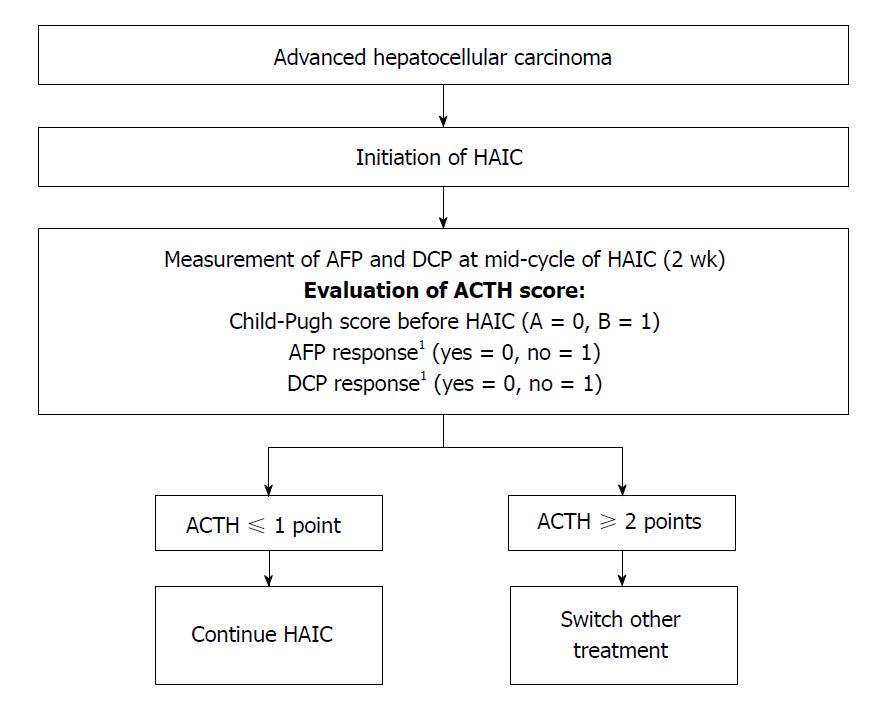Copyright
©The Author(s) 2018.
World J Hepatol. Sep 27, 2018; 10(9): 571-584
Published online Sep 27, 2018. doi: 10.4254/wjh.v10.i9.571
Published online Sep 27, 2018. doi: 10.4254/wjh.v10.i9.571
Figure 1 Treatment strategy for advanced hepatocellular carcinoma according to the hepatic arterial infusion chemotherapy score to assess continuous treatment.
The score (range, 0-3) was calculated as follows: Child-Pugh score before hepatic arterial infusion chemotherapy (HAIC) (A = 0, B = 1), alpha-fetoprotein (AFP) response (yes = 0, no = 1), and des-gamma-carboxy prothrombin (DCP) response (yes = 0, no = 1). For patients with a score ≤ 1, HAIC treatment would be continued, while for patients with a score ≥ 2, a second-line therapy such as sorafenib and/or participation in a new clinical trial would be a better option. 1The AFP and DCP responses were assessed 2 wk after HAIC induction; a positive response is defined as a reduction of ≥ 20% from baseline. ACTH: Arterial infusion chemotherapy.
- Citation: Saeki I, Yamasaki T, Maeda M, Hisanaga T, Iwamoto T, Fujisawa K, Matsumoto T, Hidaka I, Marumoto Y, Ishikawa T, Yamamoto N, Suehiro Y, Takami T, Sakaida I. Treatment strategies for advanced hepatocellular carcinoma: Sorafenib vs hepatic arterial infusion chemotherapy. World J Hepatol 2018; 10(9): 571-584
- URL: https://www.wjgnet.com/1948-5182/full/v10/i9/571.htm
- DOI: https://dx.doi.org/10.4254/wjh.v10.i9.571









